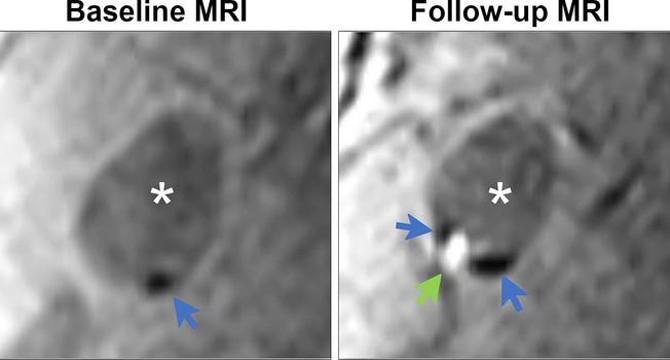Bioengineer
3d
47

Image Credit: Bioengineer
Carotid Plaque: A Growing Threat to Vascular Health Over Time
- A study using serial MRI imaging reveals insights into the evolution of carotid artery plaques over time, challenging the notion of calcified plaques being stable.
- Calcification in carotid plaques was traditionally seen as stable; however, new evidence suggests they may be prone to complications like intraplaque hemorrhage.
- The study by Dr. Daniel Bos and team involved 802 asymptomatic participants, demonstrating an increase in plaque complexity over six years.
- Plaques with calcifications had a higher risk of developing intraplaque hemorrhage, leading to increased vulnerability to stroke.
- The research indicates that early identification and surveillance of carotid atherosclerosis are crucial, even in the absence of symptoms.
- Computational simulations project that many with mono-component plaques will progress to complex plaques by age 70, emphasizing the need for proactive monitoring.
- Understanding how calcification influences plaque destabilization through mechanical stress on neovessels is essential for targeted therapies.
- Clinical implications include the importance of monitoring plaque composition evolution through advanced MRI and managing cardiovascular risk factors.
- The study calls for increased clinical awareness to reduce stroke incidence related to plaque rupture, urging comprehensive risk management strategies.
- Further research avenues may explore biochemical signals triggered by plaque constituents and assess therapeutic interventions on plaque evolution and outcomes.
Read Full Article
2 Likes
For uninterrupted reading, download the app